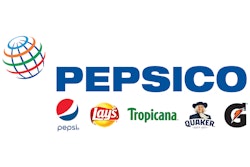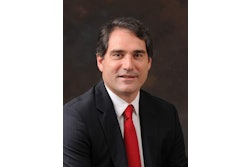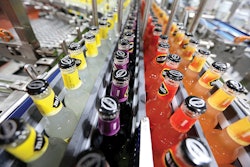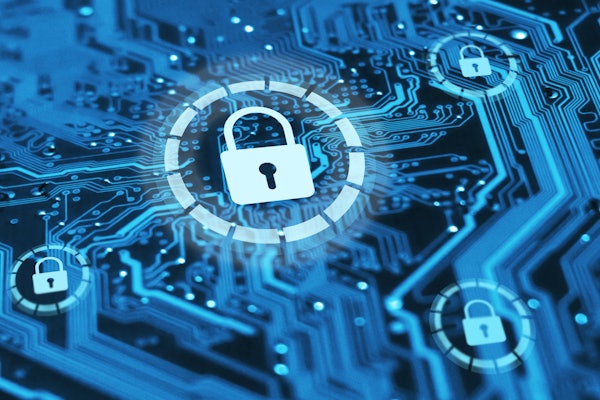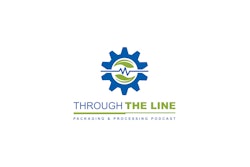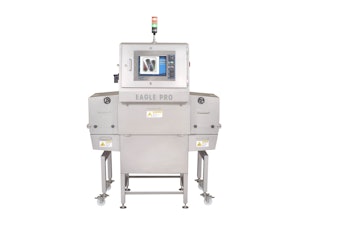The answer to how to solve the packaging and processing workforce crisis often remains incomplete. PepsiCo, the largest food company in the U.S., is doing its part to tackle workforce issues head-on, sponsoring many programs targeting the next generation of workers, like PACK EXPO’s PACK Challenge.
PepsiCo R&D Sr. Director, Global Beverages Packaging Pat Finlay joins the unPACKed podcast to discuss additional PepsiCo work, like the Million-Girl Moonshot to engage one million more girls in STEM learning opportunities and direct initiatives with SWE, Society of Women Engineers and NSBE, the National Society of Black Engineers.
To subscribe, rate, review, and find more unPACKED podcast episodes, visit pmmi.org/podcast or find us on Apple Podcasts, Spotify, iHeart Radio or wherever you listen to your podcasts.
 | Read the full transcript below.
|
Sean Riley:
With all the fancy introductions out of the way, welcome to the podcast Pat Finley.
Pat Finlay:
Hi, Sean. Thanks for having me today.
Sean Riley:
Oh, the pleasure is all ours. Before we dive into all of the initiatives that PepsiCo is involved with and how supportive you guys were of the PACK Challenge at PACK EXPO International, probably makes a little bit of sense to let everybody know who you are and a little bit about your background and how you got into this world of packaging because I know a lot of us, I wasn't born growing up saying, "I want to be a packaging guy," and I ended up doing this as a career, so I'm curious how you got started.
Pat Finlay:
I will go back to high school. In all honesty, I was not a particularly good student in high school, but I liked math and I liked science, and as I went into my senior year, I didn't really know what I wanted to do with myself when I graduated and looking at college. A friend of mine who was a quality engineer at a plastics manufacturing plant and automobile dashboard decoration company got me a job basically sweeping the floors in an assembly plant for plastics components.
Over the course of about a year, I worked my way up from being the floor sweeper to a tooling handler to ultimately a shift supervisor, and during the course of that time I really got an interest in plastics, so when I went to university, I went to Ferris State University in Big Rapids, Michigan and I went and have a bachelor of science in plastics engineering, so I don't have a packaging background directly, but I do have an engineering background.
When I graduated from university, I went to work for the packaging division of Johnson Controls, which at that time had a packaging division and today is now known as Amcor Rigid Packaging. It's been sold a couple of times. I worked with them for about 10 years in a number of different roles. I started out in facilities engineering, moved over to R&D when I took an expat assignment in Europe for a couple of years, came back, and then moved into a more traditional packaging-development-type role, so I kind of found my way into packaging versus starting out going, "I want to be a packaging engineer."
Sean Riley:
I was just thinking about it from a point of view of the story that we're talking about today is you represent the whole, you don't have to come out of high school and necessarily know, "This is what I want to be when I grow up," type deal. A lot of people think, "I have to go into college and I have to get a da, da, da," and yours kind of played out the way we're trying to explain to a lot of people that there's different avenues out there for people, so I interrupted, and I apologize for that, but I'm old enough, I didn't say that now, I probably would've forgot, so please continue.
Pat Finlay:
Well, you bring up a great point because when I signed up to go into plastics engineering at Ferris State, there was a waitlist to get into the university into that program because it was very small at the time, and I actually did a year and a half of community college taking some of my basic general courses to get them out of the way before I started my full-time at university, so I certainly did not follow the traditional path of coming out of high school, went straight into an engineering program, and finished up in four years. My total time was about a little over five with that community college time spent while I was also working in a facility. It gave me a lot of great experience on the floor and in a plastics plant and a manufacturing facility.
After about 10 years with Amcor, I joined PepsiCo. An opportunity came up for me to come out here to the East Coast and join our packaging group, which at the time was four people, and actually reported into marketing, so we were a part of the marketing team officially in the organization system. Packaging was very junior and new to a structured organization program.
I've now been with PepsiCo for 23 years and I've done a number of different roles. I started out supporting our North America beverages on CSDs. I moved over to our advanced engineering, the three-year, five-year, seven-year-out-type programs, a little more blue sky, and much stronger on the research side. After about three years in that, I went over to our Pepsi International organization, where I was based in New York, but I was traveling around the world supporting our non-carb packaging developments outside of North America.
I came back to the North America organization for a couple of years leading our hydration and portfolio, so things like SoBe, Aquafina, some of our brands like Propel that were growing and focusing on the hydration area, and then in 2013 I took over global leadership of our Pepsi Lipton joint venture packaging team, again, based out of New York, but looking at Lipton packaging developments around the globe. I was in that role for about seven years and then in 2020 came back into the beverages packaging team where I lead our global packaging resources around the world. My team is comprised of people in China and India, Mexico, Brazil, Ireland, and Moscow currently, so I have a pretty broad team spread out around the globe.
Sean Riley:
And I would say a pretty far leap from sweeping the floors, learning about plastics years ago, and getting an interest there. I mean, that's a pretty amazing story from, like you said, not necessarily having any idea or any interest, or not even being exposed to it, then learning about plastics and then working your way into packaging, which is a pretty cool case history or case study on how you can get into an industry like this and how we kind of all end up here, so that's pretty interesting to hear, Pat.
Now, from our point of view, we're bringing you here because PepsiCo was wonderful in being involved with and in sponsoring the PACK Challenge that PMMI put on at PACK EXPO International, which for people who don't know, it basically took a bunch of high school students and had them design and put together and build an actual machine that was going to mock up and package a product, which was a crazy endeavor for someone like me to wrap my head around. I wouldn't even begin to know how to do something like that in high school. But I guess from PepsiCo's point of view, why was it important for a company like Pepsi to develop these kind of initiatives and these type of programs and be involved with these things that are looking towards the future of the workforce?
Pat Finlay:
We definitely see growth opportunities as we look at people coming out of high school that, similar to myself, don't necessarily know what they're looking for. They like math, they like science, they like that component, but don't really understand what a STEM career is all about, so getting some engagement, bringing them some visibility to what STEM is, how it can impact your way of working, the types of areas that you can develop in is really building a strong baseline for the future workforce that we're going to have tomorrow.
If I look at our team around the world, and we mentioned a little bit earlier, Sean, maybe 15% of the people came out of packaging schools, we have petroleum engineers, we have mechanical engineers, we have chemical engineers, so we look at the engineering mindset as the baseline and say, "How do we take that and teach them about packaging as we're bringing in people that may not necessarily have a packaging background?" Then how do we make packaging more interesting in the engineering field as a whole, from a PepsiCo point of view, more interesting to young people that are still deciding what they want to do and how to get that exposure to something like STEM?
Sean Riley:
Very cool. What are some, I guess, specific things? What are some of the initiatives outside of, obviously you guys were huge supporters of this PACK Challenge that PMMI put on, but what are some of the other initiatives outside of that that PepsiCo is working on to propel this STEM as a career?
Pat Finlay:
Yeah, right now, we have a number of different ways that we're approaching it. You may have heard of the next Million Girls Moonshot, which is a program that we're sponsoring and supporting around how do we drive STEM to a million more girls that are still in high school and bring girls and women the opportunity to look at engineering-type backgrounds and STEM-type backgrounds as an area that they want to pursue. You have the age-old belief that engineering/STEM is male-oriented and we're seeing more and more positive performance and we're seeing better integration and diversity as we're bringing in more and more female engineers. We're also doing a lot of focus with SWE, Society of Women Engineers. We're focusing with NSBE, the National Society of Black Engineers. We're also working with SHIP around how do we bring more diversity into the workforce that we're bringing into PepsiCo from an engineering and STEM point of view, so we're looking to expand the reach of engineering to communities that in the past may not have had that type of exposure or may not have had as much exposure as we could have possibly helped drive.
Sean Riley:
That's a fantastic thing to hear on our end because we do a lot of these podcasts and we constantly hit on to the point where I know anyone listening to this is going to groan because we're always talking about how we have all these jobs that need to be filled, particularly in manufacturing and packaging and processing, and there are all these people that could fill them, whether it be minorities, women who haven't had the exposure, or maybe even a welcome mat to come and take part in these type of things, so it's great to see that PepsiCo is using that as a focus, which leads me into how else are you guys expanding your recruiting efforts to fill out the workforce of the future? Is it, not just, but are we just doing things like the things you mentioned? Or I know you've talked about some global things that you're working on. Does it touch on that as well? Just something like that that you could speak about?
Pat Finlay:
I happen to be on our R&D Recruiting Steering Committee, so I am involved in a number of different activities around that side. A couple of areas that we're looking at, and to your point around reaching communities and people that may not have had exposure in the past, if you look at a traditional internship or a co-op-type program at a place like PepsiCo, you're looking at people that are pursuing their bachelor of science degrees, their master's degrees in well-established schools, and we're now expanding that to reach out to community colleges. How do we look at people that are pursuing a two-year degree and say, "Okay, we want to bring you in. We identify you as a strong talent, somebody who's got the right mindset and way of thinking of what we're looking for an engineer. We will help you develop your education as you come in."
We have programs like My Education, where we may bring in somebody who's got a two-year program, or somebody who's a frontline employee that's looking to grow their capabilities and experience, and offer them education opportunities that can lead to undergraduate degrees, tuition reimbursement, so driving an upskilling of the workforce in general. Then we are also looking at from a community college point of view, how do we bring in somebody with a two-year degree and offer them the educational background, the educational support, and things like tuition reimbursement again to reach that four-year degree if that's something that they're interested in pursuing? Historically, we wouldn't have necessarily had that type of exposure. Those are areas that we're looking at. I use myself for the example I did about a year and a half of community college before I went into university. I thought that was a great experience. I thought it was a great opportunity for me to get some courses out of the way that were more general, but also allow me to focus on what do I need to do once I do get into university.
Sean Riley:
It just seems like such a natural blueprint, especially in this day and age where I don't think... There's this pressure, again, we've touched on a little bit earlier where kids are coming out of high school, and they need to know what they're going to do with the next 50 years of their life, or 40 years of their life. There's a handful of people that they might know what they want to do, but the majority don't know, and they go to a four-year college and end up not using it, what they majored in, or going in a different direction. That's fine, but I see a lot more of this taking your time and figuring out what you want to do, like you did, for instance, going into a community college and getting the courses out of the way that you're going to have to take no matter what without really focusing on the things that may end up being your career, which in PepsiCo's case, you're basically saying, "You guys go to a community college and come here and we're going to help shape you into what is a very profitable and wonderful career."
Pat Finlay:
Yep. Yeah, and I would even build on that a little bit, and it goes back to a little bit around what PepsiCo is. We are a 300,000-person-plus company globally. As I mentioned, my team is based around the world, so we also offer a lot of opportunities to somebody who may come in and start out in packaging and decide they want to go to operations, decide they want to go to supply chain, into procurement. We bring in people from quality into the packaging group. We bring in people from engineering teams into the packaging group. Then we also offer global opportunities through programs like Global Rotations, where somebody may go live in a place like Shanghai for six months and work with the Shanghai team and understand the way China business runs.
We also bring in, relocate people from international into the US. Recently, this last year we brought over a person from India to fill a role for us in Chicago. He was a perfect fit, was looking for a global opportunity, and it was an opportunity for us to offer exposure and growth experience to somebody who proved themselves, was a great engineer, and was looking for an opportunity to do something new and unique. You come into PepsiCo in a packaging/engineering-type role, that doesn't necessarily mean that's where you're going to end up your career with PepsiCo. You may decide you want to do something different and there is a lot of different areas to go in a company with our scale and our scope.
Sean Riley:
Yeah, I'm interested and might have to check out the career opportunities page now that you told me about all these. I get to travel the world and things like that. That's a really cool initiative and a really unique way to, like you said, expose people to different aspects of the business that might be a thing that they settle on as the thing that they want to be their career. I guess with that in mind, you've touched on a bunch of different diversity-type activities. Are there any other things that we might be missing that that PepsiCo is working on from a diversity aspect? You touched on women and minorities and things like that.
Pat Finlay:
Yeah, PepsiCo is a corporation. If you look beyond just the engineering and the packaging teams and R&D and look at the broader corporation, we've got a lot of initiatives going around racial equality and our racial equality journey in 2020. We made some commitments to how do we continue to drive diverse employment and diverse representation in our management and senior leadership roles, so we've got a lot of activities around bringing in and identifying diverse talent. I mentioned NSBE, I mentioned SHIP. We're looking to those organizations to help us with identifying talent that we want to bring into PepsiCo so that we start seeing a more diverse workforce, especially in North America. Our racial equality journey is a little bit North-America-centric, where we have some of our biggest challenges, and we've made some great progress in the last couple of years and drive in diversity, especially at the senior leadership level. We think that there's a massive benefit that comes with that.
Sean Riley:
Yeah, absolutely. That's wonderful to hear.
I took you a little longer than we said we were going to have you on for, Pat, but I really appreciate you taking time out of your day to come on here and break down a lot of the things that PepsiCo's doing out there in the world, so thank you very much for coming on the pod.
Pat Finlay:
My pleasure, Sean. I'm glad to do it.



